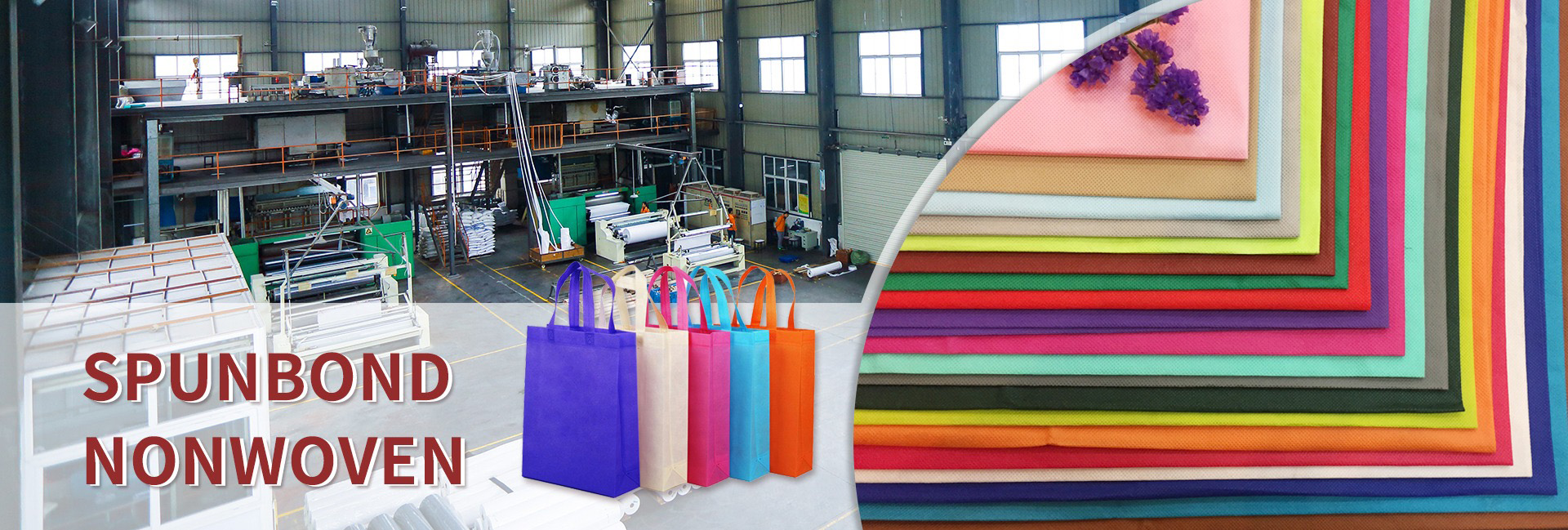Polyester (PET) non-woven fabric, a spunbond filament non-woven fabric made from 100% polyester slices, is carefully woven from countless continuous polyester filaments through spunbond hot rolling process. This non-woven fabric not only has excellent physical properties, but is also widely used in various fields. Compared with PP non-woven fabric, polyester (PET) non-woven fabric exhibits excellent heat resistance, chemical resistance, and tensile strength, making it advantageous in many application scenarios.
Four characteristics of PET non-woven fabric
Firstly, polyester (PET) spunbond filament nonwoven fabric has excellent water repellency. Its water repellent performance varies with weight, and the larger the weight and the thicker the non-woven fabric, the stronger the water repellent performance. When water droplets fall onto its surface, they will directly slide off, demonstrating excellent waterproof effect.
Secondly, this non-woven fabric has excellent high temperature resistance. Due to the melting point of polyester being as high as about 260 ° C, it can maintain dimensional stability in high temperature environments and will not deform. Therefore, it has been widely used in fields such as heat transfer printing, transmission oil filtration, and the manufacturing of high-temperature composite materials.
Moreover, polyester (PET) spunbonded non-woven fabric is second only to nylon spunbonded non-woven fabric in terms of strength, permeability, tensile resistance, tear resistance and aging resistance. These excellent performances have enabled it to be widely applied in multiple fields.
Finally, it is worth mentioning that polyester (PET) spunbond nonwoven fabric also has the characteristic of resistance to gamma rays. This means that when applied in the medical field, it can accept gamma ray disinfection without affecting its physical properties and dimensional stability, which polypropylene (PP) spunbond nonwoven fabrics do not possess.
Comparison between PP and PET nonwoven fabrics
PP non-woven fabric, made of polypropylene as raw material, belongs to thin non-woven fabric; PET non-woven fabric uses new polyester raw materials, namely polyester fibers, and there are no additives in the production process, making it an environmentally friendly thick non-woven fabric. Both have their own advantages in performance and usage.
1. Raw material cost and recyclability, PP non-woven fabric uses polypropylene (PP) raw material, which has lower raw material cost, and the waste can be recycled and reused, so the overall cost is lower. PET non-woven fabric uses polyester chips (PET) raw materials, which have high raw material costs and are not recyclable, resulting in overall high costs.
2. In terms of raw material costs, PP has a slightly lower cost compared to PET due to its relatively low raw material prices and the ability to recycle waste materials. PET uses new polyester raw materials, namely polyester fibers, and there are no additives in the production process, so the price is relatively high.
3. In terms of high temperature resistance, polypropylene non-woven fabric has obvious thermal shrinkage. According to surveys, there is significant shrinkage when the temperature reaches 140 ℃, while polyester non-woven fabric can reach a maximum temperature of around 230 ℃, demonstrating the superiority of PET in high temperature resistance.
4. In terms of printing and heat transfer effects on non-woven fabrics, PP non-woven fabrics with the same width have a higher shrinkage rate, while PET shows a smaller shrinkage rate and better effect, while also saving waste.
5. From a physical performance perspective, PET non-woven fabric is superior to PP non-woven fabric in terms of tensile strength, tension, load-bearing capacity, wear resistance, and other aspects. Mainly due to the use of special raw materials and advanced imported equipment and complex, scientific processing techniques, polyester non-woven fabric has far exceeded the technical content and requirements of polypropylene non-woven fabric. For example, a PET non-woven fabric weighing 65 grams is equivalent to the physical properties of 80 grams of PP non-woven fabric.
6. From an environmental perspective, PP non-woven fabric may be mixed with recycled waste, while PET non-woven fabric is entirely made of brand new polyester chips, making PET superior in terms of environmental protection and hygiene.
7. The anti-aging cycle is higher than that of PP non-woven fabric. The polyester non-woven fabric uses polyester as the raw material, which is worm resistant, wear-resistant, and UV resistant. The above characteristics are higher than that of polypropylene non-woven fabric.
In addition, the application range of PET non-woven fabric is very wide, covering multiple fields such as home textiles, packaging, decoration, agriculture, waterproof materials, and industrial applications. Its excellent performance and wide applicability make PET non-woven fabric occupy an important position in the market.
Dongguan Liansheng Non woven Technology Co., Ltd. was established in May 2020. It is a large-scale non-woven fabric production enterprise integrating research and development, production, and sales. It can produce various colors of PP spunbond non-woven fabrics with a width of less than 3.2 meters from 9 grams to 300 grams.
Post time: Mar-03-2025

